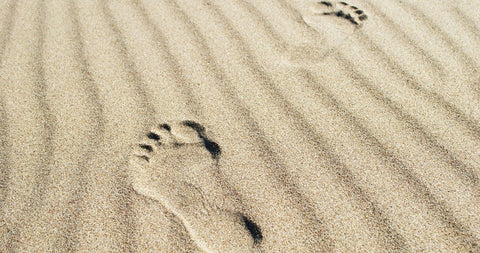
Help Your Toenails Grow Back Healthily After a Fungal Nail Infection
Help your toenails grow back healthily after a Fungal nail infection
Do you know what a Fungal Nail infection looks like? The sneaky infection often doesn’t cause any pain but it often looks unsightly. Treat the infection early and you may be able to save your nails. But if it goes untreated, you risk losing your toenail. If that does happen it’s not the end of the world.Here’s how to catch it early, help your nails regrow healthier than ever and prevent infections again.
What is a Fungal nail infection
A Fungal nail infection is caused when fungi gets between the toenail and the nail bed, often through a crack or cut in your toenail. The fungi will cause the toenail to spread across that bit of tissue causing your toenail to turn yellow and crumble.3 stages of Fungal nail infection
- The nail plate is shiny and transparent, but a few yellow or white spots have begun to appear.
- The nail plate has lost its transparency and gloss. Yellowish spots occupy the entire surface. There’s partial destruction of the nail.
- The nail plate thickens and the nail starts to crumble.
Regrowing healthy nails
As soon as you spot fungal nail infection, it is recommended that an over-the-counter antifungal or fungistatic medication is used to stop it in its tracks. Medication has to be used regularly for it to be effective. It will aim to kill the fungi and to stop it returning. A medicated nail polish is a common method to use, but it will take a few months for the nail to grow out and be completely healthy. In extreme cases, oral medication may be prescribed by your pharmacist, podiatrist or GP.- Topical medication (such as Scholl 2-in-1 antifungal treatment) is for mild to moderate fungal nail infections. Use regularly and for the recommended time and the fungal nail infection should go away within 8-10 months. THis seems like a long time, but this is how long it takes for your new healthy nail to grow back.
- Oral antifungal medication such as Terbinafine is used to treat severe fungal nail infection. It can take a long time to work and can have a number of side effects so you have to be monitored closely.
- Laser treatments are for “temporary increase of clear nail” but it’s not a cure. Cure rates for laser treatment are lower than topical medications so they are also not typically used as first-line treatments for nail fungus.
How to avoid a Fungal nail infection
Fungal nail infections are highly contagious so can be picked up from other people and they like to grow in warm dark moist areas. So they are common in gym areas, pools and can be caught from other members of the family. If you have Athlete's Foot, it can also spread to your nails or from your own foot. Maintaining a good footcare routine and being mindful of your environments will help to keep fungi at leg length. To prevent getting infected:- Keep your nails cut short and file down any thick areas.
- Use different nail tools when switching between healthy and infected nails.
- Bring your own equipment from home to the nail salon.
- Change your socks when they are damp from sweat or if your feet get wet.
- Put on clean, dry socks every day.
- Put over-the-counter antifungal foot powder or spray inside your socks and shoes to keep your feet dry.
- Wear shoes with good support and a wide toe area.
- Wear flip-flops in public areas, such as changing rooms.

